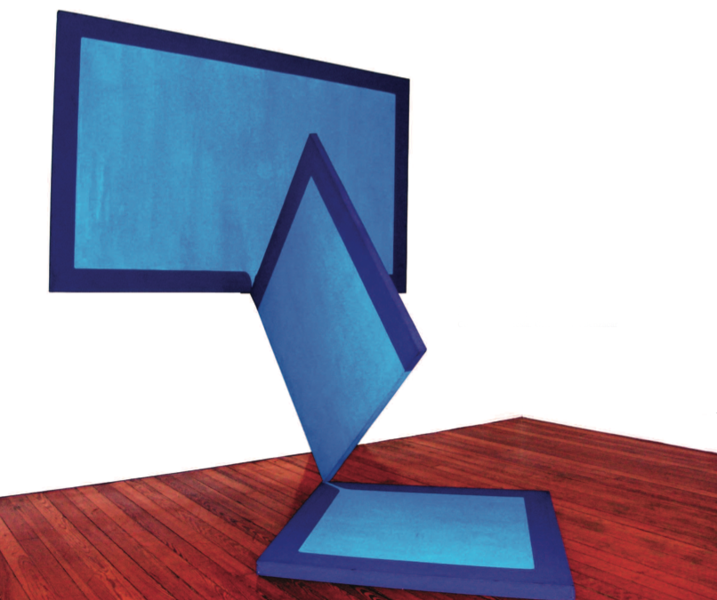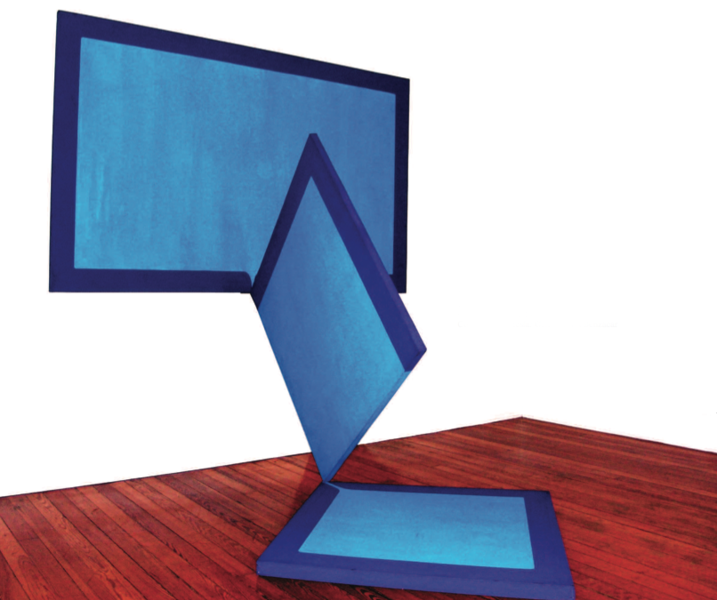Alejandro Puente
Module, System, and Object from a Latin American Perspective
For several years now, the work of Argentinean artist Alejandro Puente (Buenos Aires, 1933) has been strongly revalued by different sectors within the field of the visual arts. For anyone even briefly acquainted with it, this phenomenon is far from being a surprise, particularly in reference to the work he produced between the 1960s and 1970s, which caused a deep impression on certain pillars of art in the USA such as Sol LeWitt and Clement Greenberg. This latter critic contributed to Puente’s being awarded a Guggenheim Fellowship.

What attracted the attention of these personalities was, basically, the presence in Puente’s work of postulates they themselves were developing in the United States, yet originating so much further south. This, however, deserves some clarification. The similarities we make reference to must not be understood as a result of imitation or as the practice of a dominant trend. And this does, perhaps, mark a striking characteristic. Puente, who lived in New York for four years (1967 - 1971), does not seem to have been completely or even strongly influenced by the context as far as his production or his discourse are concerned. The work he produced at that time, for instance, might never be included within the theories of minimalism which gave rise to conceptualism.
According to Puente, “the conceptual differences, which were most probably the result of the cultural differences between the various sectors of provenance, were conflictive for me, but they also helped me develop my personal, self-defensive discourse aimed at supporting my practice. I shared some aspects of that language, the simplicity of the works, the utilization of a modular system, but I did not partake, for example, of one of their main tenets: that the artist could relinquish the physical making of the artwork. In contraposition with their Anglo-Saxon origin, my Latin American origin was evidenced in this case through the organic and the sensory. At that point, my path was already atypical.”
Going back in time and returning to the Argentinean context, Puente (together with César Paternosto) had presented in 1964 an exhibition at Lirolay Gallery that already marked, in this respect, his clear orientation regarding the way to produce abstract-geometric works, which art critic Aldo Pellegrini termed geometría sensible (sensible geometry) in contraposition with the works produced by one of the first Argentinean avant-garde movements, Arte concreto invención – the latter definitely more aligned with the minimalist industrial concept. “I did not endorse – and had not previously endorsed – the precepts or the productions of Argentinean concrete art; I thought they were too closely related to technology. This confirms that my interest in doing something totally personal, something that might identify my culture, always trying to move away from connotations, was already present before my arrival in New York.” The mentioned exhibition marked the beginning of a deep and shifting development in Puente’s work based on geometry and encompassing the different possibilities for its use, which would eventually lead to his participation in the historic exhibition with a strong conceptual overtone, Information (MoMA, 1970), curated by Kynaston McShine. The first change that took place during this stage concerned the physical occupation of space. The frame traversed the space and interfered with communication, inducing more plural and conscious gazes resulting from the different points of view proposed. The more extensive construction of the artwork is, undoubtedly, a sign of a time concerned with ensuring greater audience participation. But this work is not restrained to that partial view; it takes advantage of this to introduce the viewer in a premeditated analysis-oriented situation through the use of operations that converge, formally and visually, in a type of mathematical thinking derived from reflections, repeated modules, and so on. At this point, a conclusive liaison with the field of actual architecture made its appearance. The notion of creating an object through the repetition of a module became the axis on which to base a series of works, the result (and not the point of departure) of which was their connection with operations carried out by the so-called American conceptual art.
“I began to base my work not on the object itself but on a system which, through the repetition of modular elements, would create the object.” From that platform (module-system-object) the work focused on the issue of color as language and code. The work that best exemplifies this is Sistema Modular /Modular System, an L-shaped module spread over a large white table, generating a formal sequence. Each shape is painted according to a system, a value scale that tends towards white, which eventually constitutes a relationship system between a formal and a chromatic sequence1. In other works, Puente gradually incorporated in this scientific and ludic relationship system, additional information by way of pages containing explanatory notes, maps, jars, pigments as in the case of Todo Vale/Everything Goes, shown at the already mentioned Information exhibition. A text included in the work itself highlights the aforementioned: “Color is the only element that has grammatical and syntactical properties in and of itself. In this respect, we can speak of color as a language and analyze it or present it in accordance with its own structural rules.” Puente also based his works on several other systems referred to color and derived from different fields; one of them was, for instance, a chromatic system devised by the Russian composer Alexander Scriabin in which he resorted to synesthetic perception (a condition in which a sensation that normally occurs in one sense modality occurs when another modality is stimulated). This contributes to our understanding of how Puente developed his subsequent production, which he based on pre-Hispanic culture, given that one of the many systems he used was that of the quipu, a system of colored and knotted strings and cords in different lengths employed to represent numbers.
As we may see, there is a rapid frequency of changes in Puente’s production, which are referred both to its subject matter and its methodology. The only characteristic that remains intact is the artist’s interest in treating color in a grammatical way (tone-value- hue), not through the development of closed, tautological final schemes but, quite on the contrary, of a type of work that renders a metaphorical and sensory development possible. This constant change allows us to state that Puente never yielded to the triumphalism of an aesthetics or a mode of production; rather, he continued to abide firmly by his own beliefs. “At no time was I interested in remaining a militant supporting a fixed idea. I did not want to feel the obligation of complying with a political or conceptual ideology, as other colleagues did. This constant change simultaneously contributed soundness to my freedom.”
At present – as we mentioned at the beginning of this article – the work of this artist, like that of other Latin American artists (Hélio Oiticica, Lygia Clark, Mathias Goeritz), is being re-examined by some critics through a new filter, based on this occasion not only on the similarities that these works shared with the dominant trends or discourses of that time, but also on the glimpse (and subsequent appreciation) of the differences that the cultures of origin themselves generated in them.
1 María Silvia Etcheverry. Alejandro Puente: una particular sintaxis del color. I.U.N.A. 2004
Profile:
Alejandro Puente was born in La Plata, Argentina, in 1933. He had his main formal training under Héctor Cartier, professor of Theory of Vision at the Faculty of Fine Arts, National University of La Plata. He obtained numerous distinctions, among them the National Di Tella Award (1966) and a Guggenheim Fellowship (1967); he was appointed Full Member of the National Academy of Fine Arts and recently declared Distinguished Citizen of Buenos Aires. His works have been exhibited in prestigious institutions worldwide, among them, the São Paulo and Havana Biennials, and important institutions and collections, such as the MoMA, the Reina Sofía Museum, The Blanton Museum and MALBA have incorporated works of his. Ruth Benzacar Gallery, Buenos Aires, has represented him since 1980.







